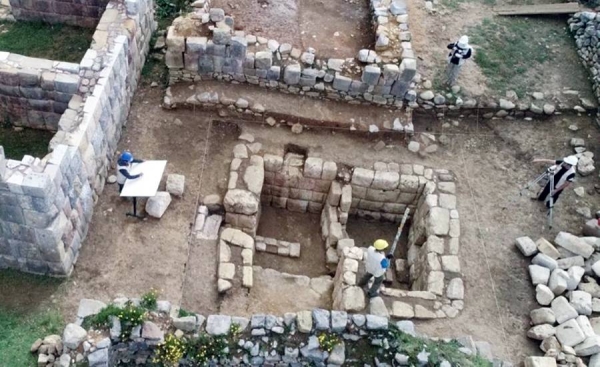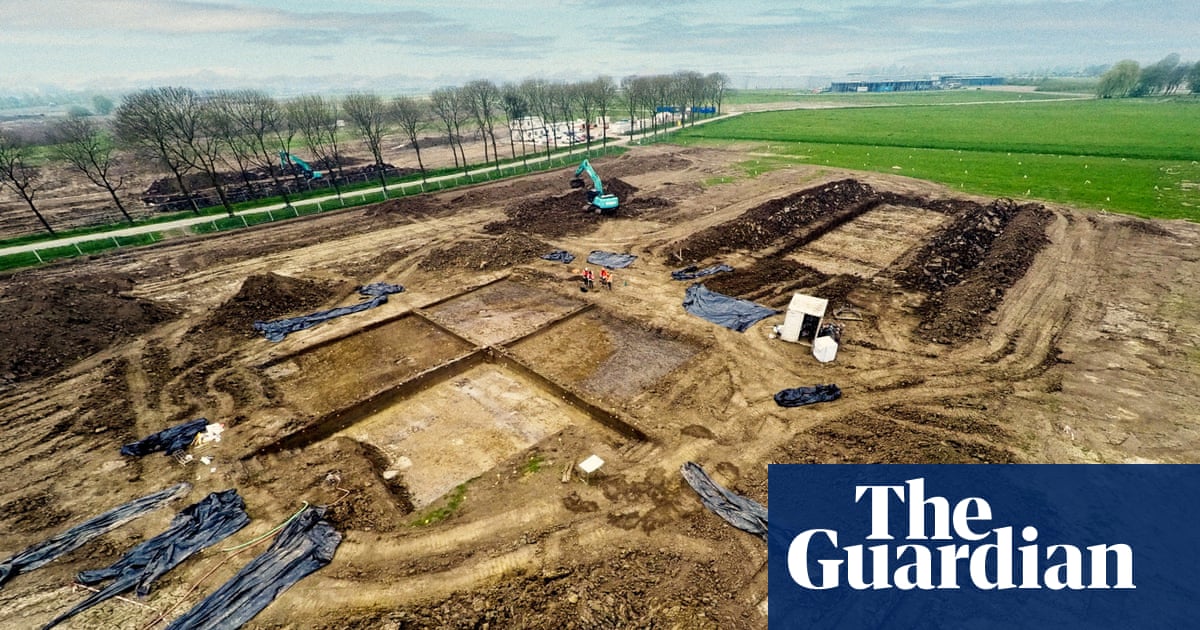
A group of female graziers from outback Queensland who hunt fossils in their downtime have uncovered the remains of a 100m-year-old creature that palaeontologists are likening to the Rosetta Stone for its potential to unlock the discovery of several new species of prehistoric marine giant.
One of the “Rock Chicks” – as the amateur palaeontologists call themselves – uncovered the fossilised remains of the long-necked plesiosaur, known as an elasmosaur, while searching her western Queensland cattle station in August.
This was the first time that an elasmosaur skull has been found connected to its body in Australia.
The information that provides could allow palaeontologists to decipher other fossils held in museums, just as the Rosetta Stone, with its three scripts, allowed philologists to crack ancient Egyptian hieroglyphics.
The trio had already found another plesiosaur among other significant fossil finds in the weeks leading up to the moment when Cassandra Prince saw a head looking up at her from the dry earth.
“I’m like, no, you know, this is not real,” Prince said. “And then I look down again and I’m like, holy hell, I think that’s a skull looking up at me.”
Such a fossil, which has been kept under wraps until now, is globally rare, according to Dr Espen Knutsen, the senior curator of palaeontology at the Queensland Museum.
Prince was in regular contact with Knutsen at the time of her discovery, sending him pictures of her and sister Cynthia and cousin Sally’s other finds. Instantly, though, the palaeontologist knew this one was special.
The museum already holds the skull of an elasmosaur its collection, along with several bodies. But a skull connected to a body has proved elusive.
This is largely to do with the distinctive anatomy of elasmosaur. The marine reptiles probably grew to around eight metres in length and had tiny heads atop very, very long necks.
“A lot of it is neck,” Knutsen said. “At least half, if not two-thirds of the entire body length [of an elasmosaur] is mostly neck.”
Sign up for Guardian Australia’s free morning and afternoon email newsletters for your daily news roundup
When an elasmosaur died, its decomposing body would swell with gas that made it rise to the surface, where it would float at the mercy of tides and scavengers. A metres-long gap between body and head meant these body parts would rarely sink to the same spot once the gas dissipated.
This particular elasmosaur had its skull, neck and front half of the body all preserved together – but the back half of its body is missing.
Knutsen suggested the elasmosaur may have been “bitten in half” by the apex predator of its day: a 10-metre, 11-tonne kronosaur. Such a puncture, he said, would have caused the rest of the elasmosaur corpse to sink instantly to the bottom of what was then an inland sea 50 metres deep.
It is an initial theory Knutsen’s team of palaeontologists will tease out over coming years as they hope to unravel the story of this five- to seven-metre juvenile they’ve called the Little Prince, in honour of the person who found it.
But that work is likely to also shed light on many other prehistoric beasts that swam central Queensland during the Cretaceous period, when the now arid grasslands formed part of the supercontinent Gondwanaland and were submerged beneath a vast inland sea upon whose shores dinosaurs roamed.
While only one species can currently be deciphered from the remains already found in Australia, Knutsen is confident that many different kinds of elasmosaurs shared that prehistoric sea.
A skull is a key to unlocking the difference between those species. Not only was the single skull found in Queensland – prior to the discovery of Little Prince – separated from its body, it had been squashed flat by the weight of earth that covered it.
The skull and body that Prince found, however, is three-dimensionally preserved, allowing a much richer insight into the anatomy and way of life of the elasmosaur.
Scientists have wondered whether the prehistoric reptiles used their teeth to filter feed crustaceans and bivalves from the ocean floor, and their big flippers to slowly cruise along migration routes as whales do today.
Knutsen hopes Little Prince could shed light on those questions, while enabling paleontologists to describe several species from the disparate remains already held within the museum.
“We will be able to unravel all that taxonomy that has eluded us up until now,” Knutsen said.












